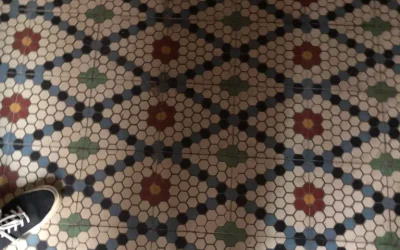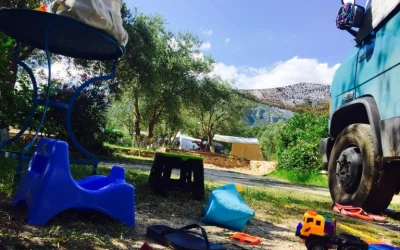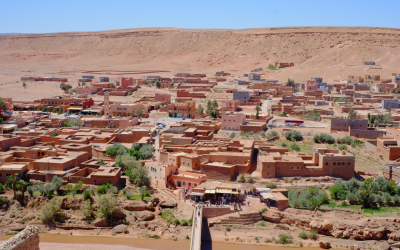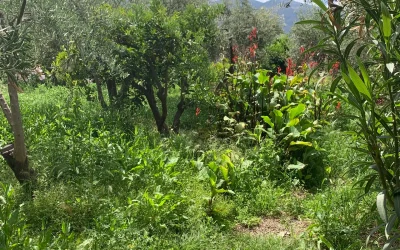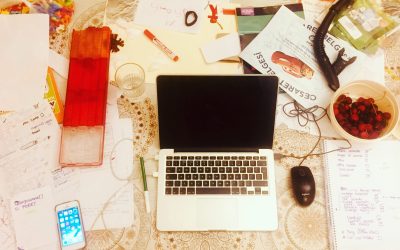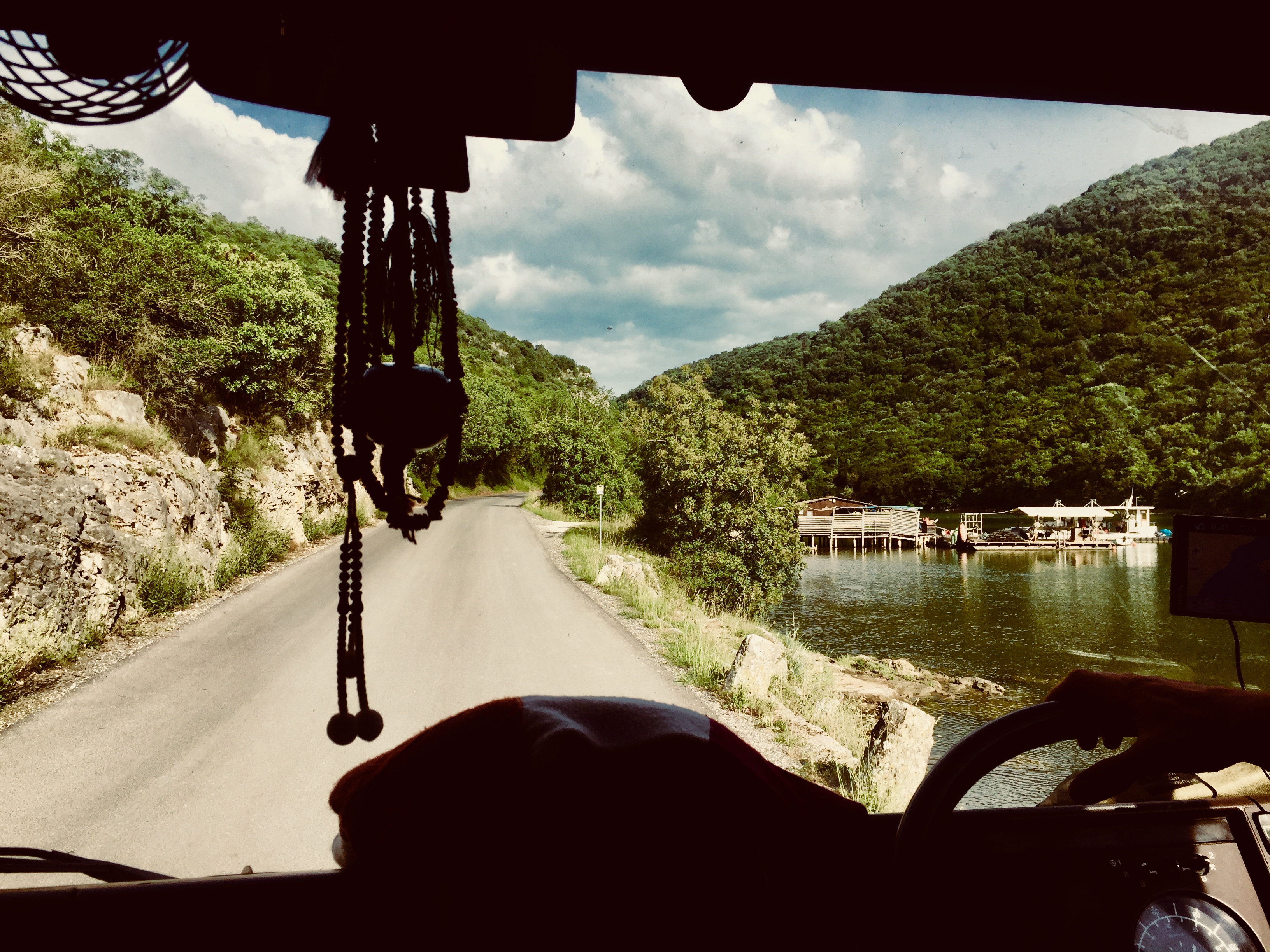
This summer we travelled the Mediterranean coast in our campervan, from Italy through to Turkey. We spent three weeks driving through the pristine resorts of the Croatian coast, island-hopping some of the many beautiful, ‘unspoilt’ islands (as much as you can ‘hop’ in a 6 tonne beast of a vehicle). We spent a long weekend camping on the stunning, 45km-long remote island of Dugi Otok, which took two hours to reach by ferry. First, we visited a campsite situated in the pine forest at one tip of the island, where our son played in the calm shallow waters and rock pools and daytrippers crowded the beach until 3pm before it became ‘ours’ again.
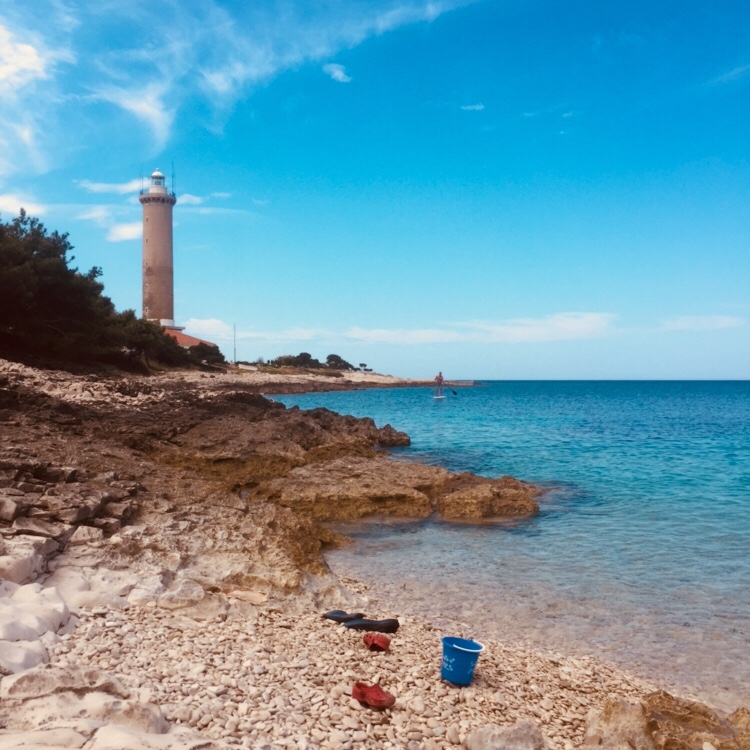
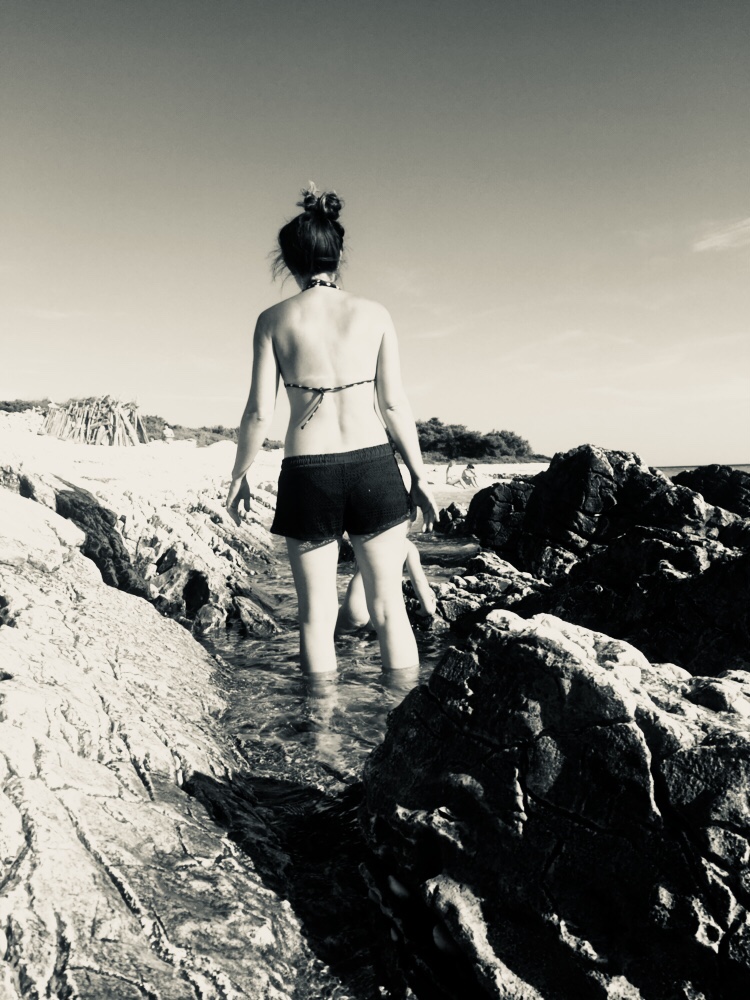
On the last day we were driving the main road to the opposite end of the island, when to the east we spotted what looked like a series of circular pens lined with floats, being pulled slowly by small boats. My partner excitedly and optimistically said ‘I think I know what that is: I read about this guy who has designed a machine that scours the surface of the ocean cleaning up the plastic waste. I think it’s that’. Indeed oceancleanup.com tells you all about this excellent project funded by crowd-sourcing. But I read it only starts trials in the Pacific in 2018, not in the Mediterranean. I continued to research what these ocean structures might be and then I found it: it was most likely a tuna ‘ranch.’ According to Greenpeace, in such outfits, young wild tuna are caught and put into cages, which are moved around the Med, while the tuna are fattened-up, fed on other wild-caught fish. Not only is this quite depressing on an animal-rights basis, it’s also unsustainable as apparently it takes up to 20 kilograms of bait to produce just one kilogram of tuna. The bait is made from other fish species, predominantly caught elsewhere. Moreover, the bait brought from elsewhere can introduce disease[1]; and fish farming often uses large amounts of chemicals, damaging the ecosystem.
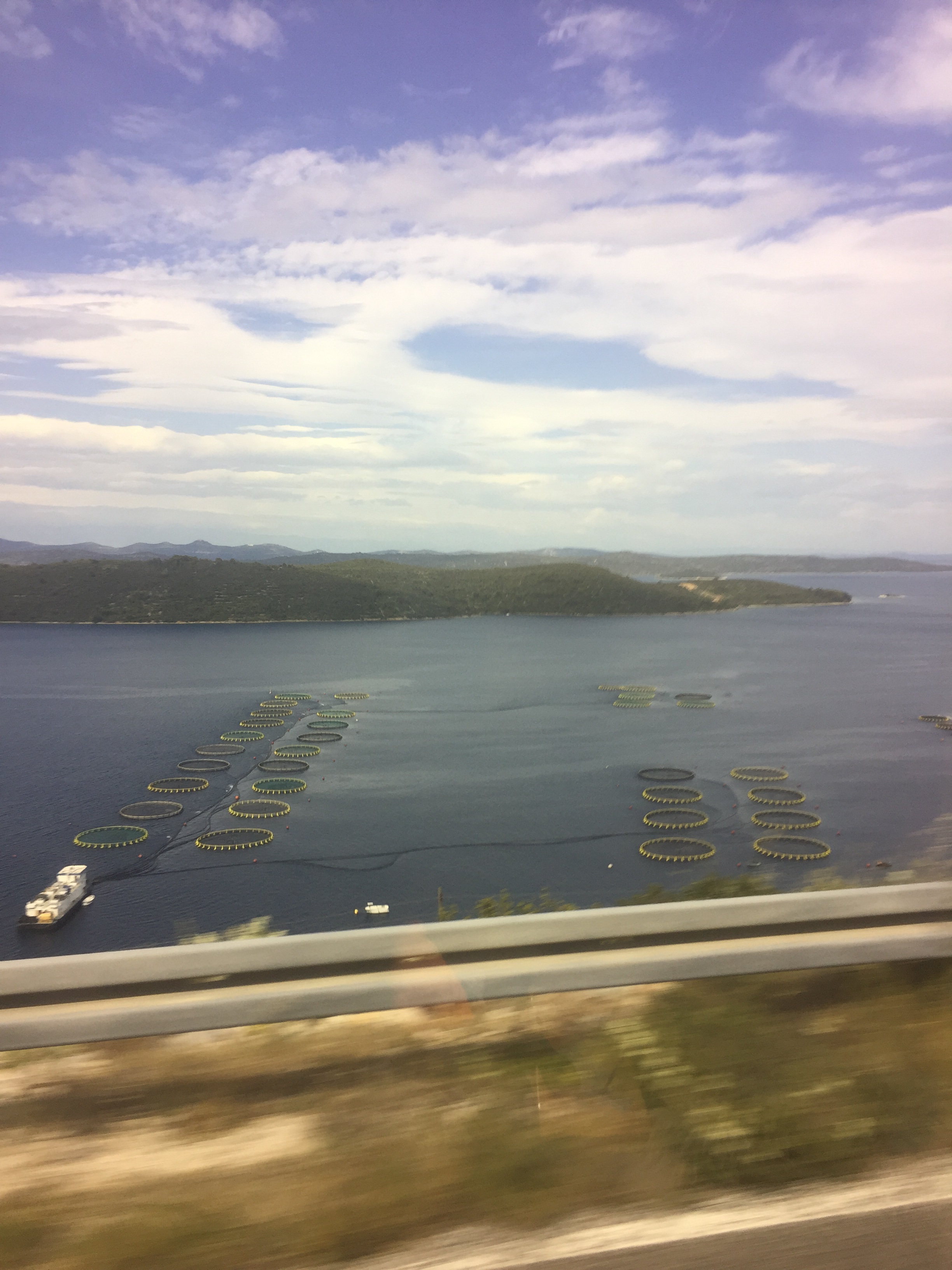
While some ‘aquaculture’ farms claim to be responsible and sustainable, the tuna ranched here off Croatia is said to be Blue Fin, hailed by Greenpeace as endangered. Such ranches are thought to be responsible for the depleted stocks of Blue Fin, caught where it is spawned, off the coast of Lybia. First started in Croatia in 1997 there are now said to be 69 tuna ranching operations in the Med with over 1700 flotillas, with Malta now growing a substantial industry.
Blue Fin ranching here, is a multi-billion pound business enabled by lax regulation, corrupt governments, bent and greedy fishing corporations headed by tuna ‘barons’ and a predominantly Japanese market (consuming 80% of the worlds supply). According to a seven-month inquiry into tuna ranching by the International Consortium of Investigative Journalists (ICIJ), fishermen, ranchers, and traders have engaged in widespread fraud and negligence (involving off the books sales and under-reporting catches). Since 2008, under pressure from environmentalists and scientists, Japanese officials made their first big refusal of Blue Fin imports, citing dubious paperwork by suppliers. It is unclear how this is impacting on the scale of these ranches today. A 2017 article in the Croatia Times celebrates the ‘abundance’ of delicious tuna coming from the Adriatic seas around Croatia, with no mention of tuna ranches, leaving the reader to believe that there is natural abundance. In fact, ‘aquaculture’ or fish farms now produce nearly half of the total of fish for human consumption, but the environmental degradation caused (vs. the high energy consumption of offshore farms) means we cannot tell ourselves that any aquaculture is sustainable.
I then began to research the Mediterranean Sea further, trying to reconcile our experience of a picturesque beach holiday with what I know about pollution and over-fishing. I found that the Mediterranean Sea is one of the most polluted oceans of the world (only third to the Gulf of Mexico and the Baltic). According to the United Nations Environment Program, there is 650 million tons of sewage and a combined 230,000 tons of mineral oil, mercury, lead and phosphates dumped into the Mediterranean Sea each year. One third of the world’s shipping passes through the Mediterranean and between them, ships discharge between 100,000 and 150,000 tonnes of crude oil each year. Coastal discharges from industry and cities also result in high concentrations of mercury, cadmium, zinc, lead and untreated sewage. In 2007, a litre of Mediterranean seawater contained 10g of petrochemicals.
That is before we even talk about plastic. According to the WWF, the Atlantic and Pacific ‘garbage patches’ receive the most attention, but scientists claim the Mediterranean is the region most threatened by plastic pollution, partly because it is semi-enclosed, it acts as a trap for plastics. Tourists are thought to be responsible for annual spikes of 40% in plastic pollution in the Med each summer. In 2015 a clean up project began across some of the Mediterranean countries which involves volunteers picking up plastic waste on the beaches (that which hasn’t already been consumed by sea life and sea birds). However, the campaign itself recognised that the level of plastic waste in the Med is beyond critical. The website claims that in certain places the volume of micro-plastic in the water exceeds that of plankton.
Now we are in Istanbul in Turkey my son and I walk along the Bosphorus, enjoying spotting the shoals of fish in the shallow waters. Fishing season has begun and everyday, since the first of September, I have watched the barrage of purse-seine vessels with huge circular nets sitting in the Bosphorus channel, day and night, radar technology hunting down Palamut (Skipjack tuna). My father-in-law used to fish here with his small fishing boat and sell his catch in the market. There used to be a huge variety of fish here, big and small, but since the 1970s he said the larger purse-seine vessels have increased in number and now there are only really Palamut left, even those, it is suspected, are being caught too young [i]. Currently no purse-seine fishing operation is rated as sustainable by the Marine Stewardship Council.
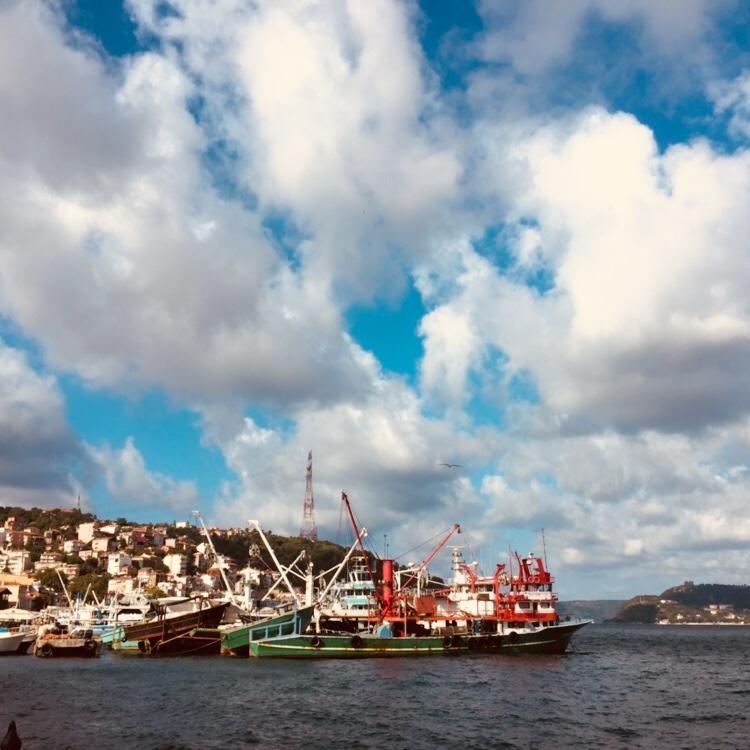
Last week the WWF launched its bi-annual report Living Planet, its most heartbreaking claim being that in the last 50 years we have seen an overall decline of 60% in global population sizes of vertebrate species. The level and speed of this holocaust is truly shameful. Moreover, I am gravely reminded of the scientific prediction of the collapse of every species of wild-caught seafood by 2050, if current trends continue, and serious intervention is not taken into the clean up and protection of our oceans. At first watching the fishing on the Bosphorous Straight felt quaint, but now I am kept awake at night by the constant drone of the ship’s motors, and this unfolding horror story.
It is blinkered, foolish even to travel this beautiful planet and not to be cognizant of the abuse we have inflicted, and continue to inflict. We don’t need sci-fi and zombie horror to dream up an imaginary dystopia, we are already there. We are already dead.
But what can I do?
Industry is way out of control, but the very least we can do is:
- Don’t buy fish.
- Don’t eat it. Unless you caught it yourself with a fishing rod.
- Support Greenpeace’s campaign for ocean sanctuaries
- Join direct action groups such as Extinction Rebellion. Enough is enough.
- Don’t buy single use plastic. Ever. If you can help it.
- Take direct action against plastic packaging
- Donate to the Ocean Clean-up
Footnotes
[i] Apparently the European tuna farming industry buys more than 200,000 tons of mostly frozen and untreated fish annually from the North Atlantic, West Africa and South America. From http://factsanddetails.com/world/cat53/sub340/item2188.html accessed 5th Nov 2018, written in 2008 (updated 2012) by Jeffrey Hays, derived from newspaper sources.
[ii] I found a Turkish project to monitor Palamut fishing in the Bosphorus 2012-15: Palamutlar Nerede? But the website palamutlarnerede.org is no longer. The only reference to it I can find now is on their sponsor’s page, only written in Turkish: https://www.metro-tr.com/deger-yaratan-projeler/palamutlar-nerede. Maybe you can help me with more information about the outcome of this project, or similar endeavours?
All photographs are the author’s own.
